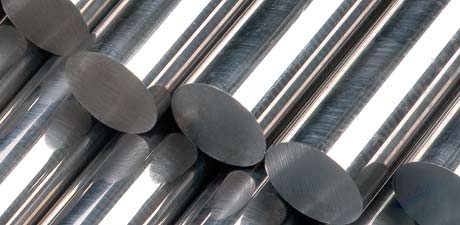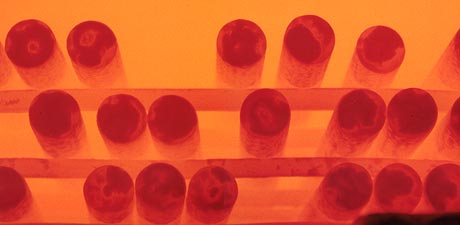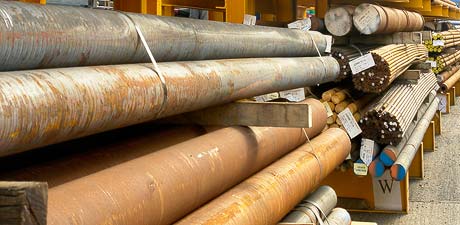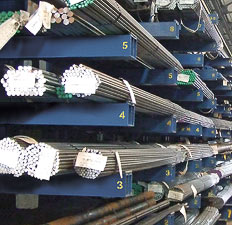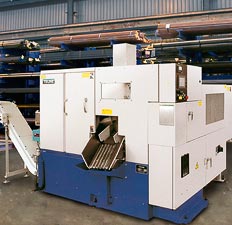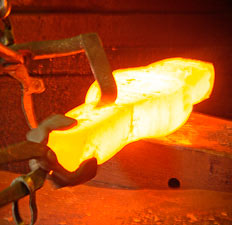Technical Data
Metallurgical Terms
McQuaid Ehn Grain Size Test.
A method of assessing austenitic grain size which was first developed to determine the cause of soft spots on case hardened steels. A specimen of steel from which all scale has been removed is carburized in a solid medium for 8 hours at 925°C. The size of the pearlite crystals, which indicates the size of the original austenite grain, is easily seen by the surrounding membranes of excess Fe3C (cementite). The grain size is measured at X100 magnification and compared with standard charts. The figures range from No 1, very coarse, to No 8, very fine.
Macrograph.
A low power reproduction, usually by photography, of the coarse structure of, for example, a metal as shown by a polished and, as a rule, etched section or surface.
Macrostructure.
The general crystalline structure of a metal or alloy and the distribution of impurities as seen on polished and etched surfaces, either by the naked eye or under magnifications of less than X10.
Magnesia. (MgO).
Important basic refractory, the main constituent of calcined magnesite. Used for furnace hearths and linings.
Magnetic Change Point.
The temperature at which iron becomes non-magnetic on heating (Ac2) and conversely that at which it becomes magnetic on cooling (Ar2). This temperature, also known as the Curie or magnetic transformation point, in pure iron is 770°C.
Magnetic Crack Detection.
The part to be examined is magnetized either by passing a heavy current through it or by making it the core of a coil through which a heavy current is passed. Cracks, or non-magnetic phases such as inclusions, cause the magnetic flux to break the surface thus forming free magnetic poles. When the part is sprayed with a suspension of iron oxide particles, they collect at the free poles and thus show the presence of defects.
Malleability.
The property which enables a metal to be mechanically deformed under compression, as in hammering or rolling into thin sheets without cracking. (See Ductility).
Malleable Cast iron.
(See Cast Iron).
Maraging Steel.
The name given to a group of high nickel alloy steels which after solution treatment consist of martensite which can be age hardened by a low temperature treatment. Because the steels have a low carbon content the martensite initially formed is soft and can be readily machined. Ageing takes place without significant change in dimensions so that little or no finishing is required subsequently.
Martempering.
In this method of heat-treatment, the ideal is to quench the part at such a rate that it reaches the Ms temperature in the fully austenitic condition. After equalization of temperature, the part is cooled slowly, so that the temperature gradients are negligible and the resulting thermal stresses are at a minimum. In practice, this ideal is only approached in so far as it is necessary to prevent cracking, reduce distortion and to obtain a given hardness. As the Ms point is usually in the region of 250°C, the quenching must be done in a salt or metal bath. The quenching and time available for the equalization of temperature limits the section size that can be successfully martempered to somewhat less than that permissible with conventional quenching. Similarly, the minimum carbon or alloy content for a given section is higher. The outstanding advantage of martempering is the reduction of thermal stresses and consequently the prevention of cracking and the minimizing of distortion.


